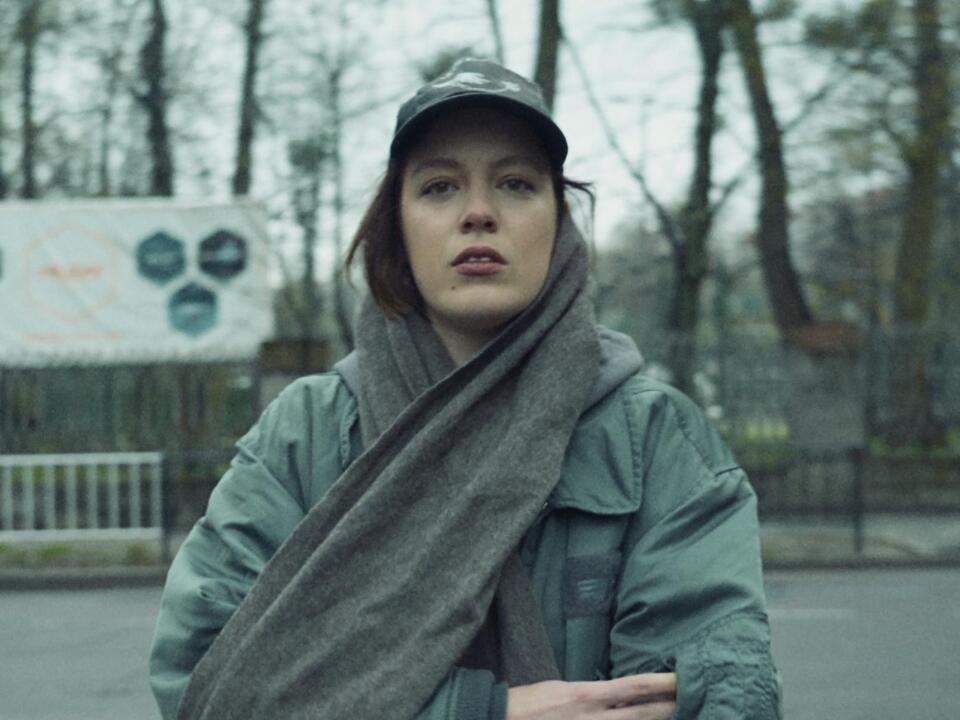Physical Address
304 North Cardinal St.
Dorchester Center, MA 02124
Physical Address
304 North Cardinal St.
Dorchester Center, MA 02124

Kyiv was expected to fall in just three days. This was the prediction, rather dismissively, from various analysts and pundits as Russia began its invasion of Ukraine in February 2022. They anticipated a swift and decisive conflict, but the Ukrainian resistance has proven to be resilient. Now, nearly three years into the war, Ukraine stands strong.
“What is this nation?” asks David Gutnik, a Brooklyn-born filmmaker of Ukrainian heritage. “What is this people? What is this identity?”
These rhetorical questions posed by Gutnik are rooted in the surprise that a nation so quickly dismissed has held its ground. Rule of Two Walls, Gutnik’s deeply resonant documentary, aims to shed light on the identity and resilience of the Ukrainian people, an identity largely unknown to the world.
The film focuses on Ukrainians on the frontlines, not the soldiers, but the artists steadfastly rooted in their homeland amidst destruction. These are painters, singers, and other cultural figures hosting exhibits and shows, all while gunfire and shelling echo in the background. Their art becomes intertwined with conflict, serving as a testament to their defiance and an expression of their Ukrainian identity in response to Vladimir Putin’s claims that they lack such identity.
“This is a war of shells and missiles and drones,” says Gutnik from his home in New York. “But it is also a war of identity, a war of memory, a war of who gets to write the history. Does the colonizer get to write it or do people who want statehood and dignity get to write it?”
Among the artists featured in Rule of Two Walls is Bogdana Davydiuk, whose Dada-esque street murals and mosaics capture the fervor and chaos of war. There’s also rapper Stepan Burban, aka Palindrom, whose angry rhymes confront Russian aggression, and Kinder Album, an anonymous artist whose child-like drawings of naked bodies lay bare the vulnerability faced in wartime. The film’s title is explained by this anonymous artist and refers to finding a corridor when time to reach shelter is too short during a bombardment.
Gutnik and his team—his cinematographer, producer, composer, and sound recordist—all appear on-camera, becoming part of this artistic resistance. They are artists themselves, making a film that captures, through disembodied voices and other experimental techniques, the experience of war displacement. Rule of Two Walls achieves an eerie poetic feel as it mirrors its subject and offers the filmmakers a medium to process their traumas.
Gutnik originally intended to film Ukrainian refugees, an idea reflecting his fractured connection with his homeland. His family emigrated before he was born, becoming part of a diaspora that struggled with suppressed language and culture. This war, however, has sparked a desire to reclaim their heritage.
“All these Ukrainians in diaspora have been living quietly in a still hornet’s nest,” says Gutnik. “This war has shaken it. Now these bees are buzzing all over saying, ‘No! I am Ukrainian! I’m here! They can’t tell us who we are.’”
Gutnik’s direction changed when he met Lyana Mytsko, director of the Lviv Municipal Art Center, which serves both as a wartime shelter and a space for artistic expression. Mytsko’s quote, “Each one is a gun of Ukrainian culture,” resonated deeply with him.
Upon meeting in 2022, Gutnik found Mytsko peeling away old Soviet walls in the art center, uncovering pre-USSR murals intentionally buried. This act inspired the film’s theme: reclaiming cultural identity and decolonizing consciousness.
Throughout Rule of Two Walls, there is a dual focus: the creation and preservation of art and the deliberate attack against it. Theatres and museums are bombed as a means to erase history and culture, a tactic familiar to any group facing potential genocide.
Gutnik draws a parallel to historic atrocities: Indigenous cultures had their languages and rituals stripped, Nazis destroyed Jewish art and literature, and the Sri Lankan army burned the Jaffna library during its early phases of genocide against Tamils. Recently, in Gaza, Unesco verified damage to over 50 cultural sites, though some reports suggest the number is quadruple that.
“When someone wants to commit genocide, they claim these people don’t exist,” says Gutnik, referencing historian Timothy Snyder. “So destroying them doesn’t count as genocide because they never existed.”
He adds, “Two days before the full-scale war, Putin justified his invasion of Ukraine on the grounds that Ukraine doesn’t exist. The cultural space is a front line in this war. Misinformation and misunderstandings about Ukrainian history are weaponized, leading to genocide and resulting in loss of lives.”
Gutnik’s film starkly confronts this horror, presenting images of charred and mutilated bodies. Some viewers have expressed discomfort with these graphic scenes, particularly American audiences unaccustomed to war. Gutnik argues that omitting such scenes would betray the reality faced by Ukrainians.
“If you don’t have to see it, you can tune it out,” Gutnik explains, contrasting Americans’ ability to disengage with Ukrainians’ harsh realities.
There seems to be a link between those who refuse to see the horror and those who refuse to acknowledge ongoing genocide, whether in Ukraine or Gaza.
“If you don’t name it, show it, or say it, you don’t have to deal with it,” says Gutnik, referencing Snyder again. “Whenever anyone says ‘genocide,’ someone in the room rolls their eyes because admitting it implicates our responsibility. We don’t want to acknowledge it’s happening on our watch, so we avoid calling it what it is.”
Source: The Guardian



